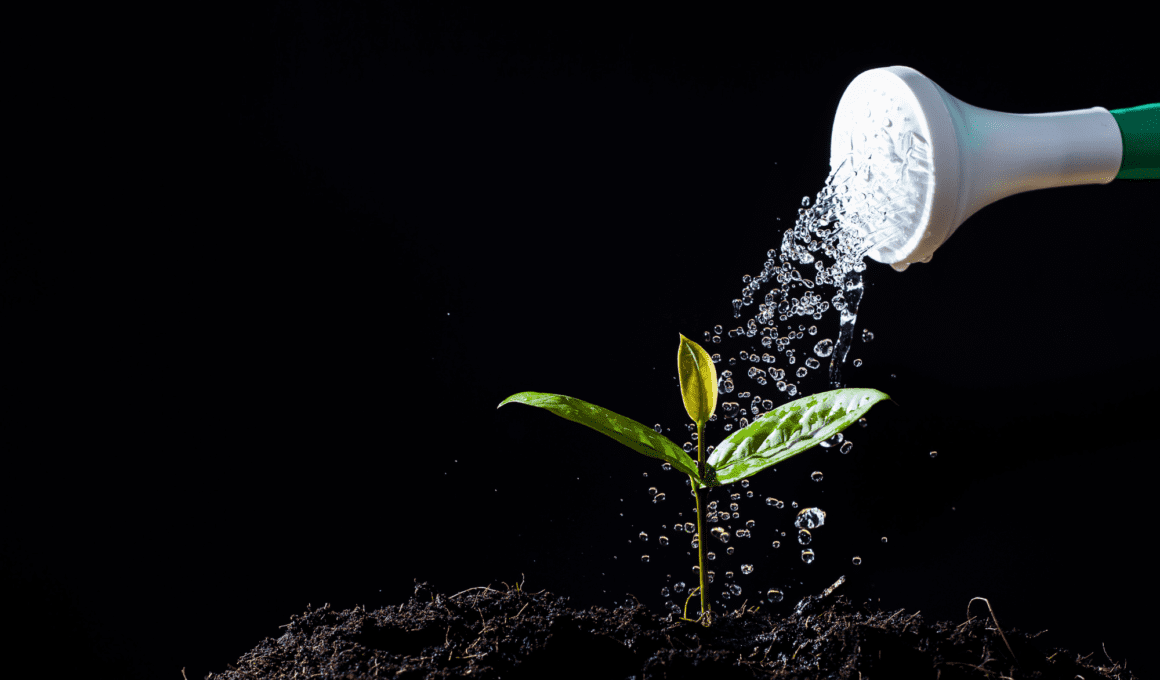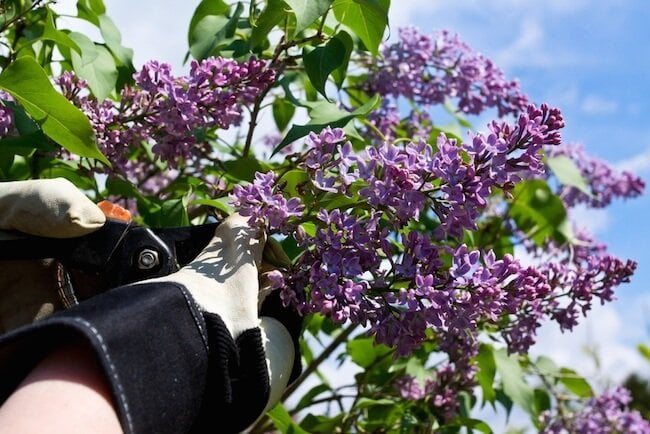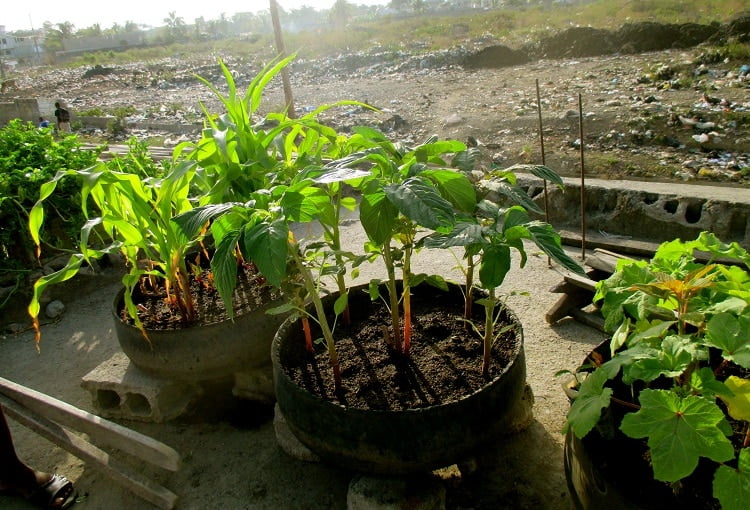Quick Summary
- Proper watering is crucial for seedling growth and survival
- Seedlings require frequent watering, especially in early stages
- Aim for consistently moist soil, not waterlogged
- Adjust watering schedule based on soil moisture to avoid overwatering
Understand the Watering Needs of Seedlings
Let’s talk about how often you should water your seedlings! It’s important to understand the watering needs of your precious plants to ensure their proper growth and development. Watering frequency is crucial, as too much or too little water can harm your seedlings. To determine the right watering frequency, you need to consider factors such as the type of seedling, its growth stage, and the environmental conditions. Generally, seedlings require frequent watering, especially during their early stages when they have delicate root systems. As a rule of thumb, you should aim to keep the soil consistently moist, but not waterlogged. Signs of under watering can help you identify if your seedlings are not receiving enough water. Look for wilting leaves, drooping stems, and dry soil. Additionally, if you notice that the soil is pulling away from the edges of the container or if the seedlings are growing slowly, it may be a sign of insufficient water. Remember, it’s better to slightly underwater than overwater your seedlings. Overwatering can lead to root rot and other fungal diseases. So, pay attention to the watering needs of your seedlings and adjust accordingly to keep them healthy and thriving.Consider the Type of Soil and Container
Make sure to check the type of soil and container for your seedlings to determine the appropriate watering schedule. This is crucial in ensuring the health and growth of your plants. Here are three important things to consider when choosing the right container and selecting the appropriate soil type:- Container drainage: A container with proper drainage is essential to prevent waterlogged soil, which can lead to root rot and other diseases. Make sure your container has drainage holes at the bottom to allow excess water to escape.
- Soil composition: The type of soil you use plays a vital role in water retention. Choose a well-draining soil mix that allows water to penetrate easily but also holds enough moisture for the plant’s roots. Avoid heavy clay soils that tend to become compacted and hinder water movement.
- Container size: The size of your container affects how often you need to water your seedlings. Smaller containers dry out more quickly, requiring frequent watering, while larger containers retain moisture for a longer period. Consider the size and stage of your seedlings when selecting the appropriate container size.
Check the Moisture Level of the Soil
Checking the moisture level of the soil is essential for ensuring the proper hydration of your plants and promoting their healthy growth. By regularly monitoring the moisture content, you can determine the watering frequency that best suits your seedlings. Overwatering can lead to root rot and other problems, so it’s crucial to strike a balance. To check the moisture level, simply stick your finger about an inch into the soil. If it feels dry, it’s probably time to water. If it feels moist or wet, hold off for a little longer. Another way to assess the moisture level is by using a moisture meter or a soil moisture sensor. These handy tools can provide more accurate readings and help you avoid overwatering. Understanding the signs of overwatering is also important. If you notice yellowing or wilting leaves, or if the soil feels constantly soggy, you may be overwatering. Additionally, a foul smell or the presence of mold or fungus on the soil surface can be indicators of excessive moisture. To prevent overwatering, make sure your pots have proper drainage holes to allow excess water to escape. Adjusting your watering schedule based on the moisture level of the soil will help ensure that your seedlings receive just the right amount of water, promoting their healthy development and preventing any potential issues.Water Seedlings in the Morning
Starting the day off right, it’s best to give your little plants a drink in the morning. Watering seedlings in the morning has several benefits and is considered a best practice for their overall health and well-being. Firstly, morning watering allows the plants to absorb the moisture they need before the heat of the day sets in. This ensures that they have enough water to sustain themselves throughout the day, especially during hot summer months. By watering in the morning, you’re giving your seedlings a head start and setting them up for success. Another benefit of morning watering is that it helps prevent diseases and fungus from developing. Watering in the morning allows the leaves to dry out quickly, reducing the chance of moisture sitting on the foliage for an extended period. This can help prevent the growth of harmful pathogens that thrive in damp conditions. When watering your seedlings in the morning, it’s important to follow some best practices. Make sure to water the soil directly at the base of the plants, avoiding getting the foliage wet. This helps prevent the spread of diseases and maintains a healthy environment for your seedlings. Additionally, water deeply but infrequently, allowing the soil to dry out slightly between watering sessions. By following these best practices and watering your seedlings in the morning, you’re providing them with the optimal conditions for growth and ensuring their safety and well-being. So, rise and shine, and give your little plants a refreshing morning drink!Use the Right Watering Technique
Get ready to level up your gardening game by mastering the art of watering your little plants with the right technique. Proper watering techniques are essential to ensure the health and growth of your seedlings. When it comes to watering, it’s crucial to avoid waterlogged soil, as this can lead to root rot and other issues that can harm your plants. To prevent this, follow these simple steps. First, make sure to water your seedlings at their base rather than from overhead. This helps to prevent the leaves from getting wet, which can increase the risk of diseases. Use a watering can or a hose with a gentle spray attachment to deliver the water directly to the soil.
Next, water your seedlings deeply but infrequently. This encourages the roots to grow deeper into the soil, making your plants more resilient and able to withstand dry periods. It’s better to water deeply once or twice a week rather than giving them frequent shallow waterings.
Lastly, always check the moisture level of the soil before watering. Stick your finger about an inch into the soil to see if it feels dry. If it does, then it’s time to water. If it feels moist, hold off on watering for a few more days.
By using the proper watering technique and avoiding waterlogged soil, you’ll be well on your way to nurturing healthy and thriving seedlings. Happy gardening!
First, make sure to water your seedlings at their base rather than from overhead. This helps to prevent the leaves from getting wet, which can increase the risk of diseases. Use a watering can or a hose with a gentle spray attachment to deliver the water directly to the soil.
Next, water your seedlings deeply but infrequently. This encourages the roots to grow deeper into the soil, making your plants more resilient and able to withstand dry periods. It’s better to water deeply once or twice a week rather than giving them frequent shallow waterings.
Lastly, always check the moisture level of the soil before watering. Stick your finger about an inch into the soil to see if it feels dry. If it does, then it’s time to water. If it feels moist, hold off on watering for a few more days.
By using the proper watering technique and avoiding waterlogged soil, you’ll be well on your way to nurturing healthy and thriving seedlings. Happy gardening!
How Often Should You Water Creeping Jenny Seedlings?
The watering frequency for creeping jenny seedlings is crucial for their healthy growth. To maintain adequate moisture levels, water them regularly but avoid overwatering. Keep a watchful eye on the soil moisture, ensuring it remains consistently damp but not waterlogged. Adjust the watering schedule based on environmental conditions, such as humidity and temperature, to promote successful development.
Avoid Overwatering
To prevent your plants from drowning, it’s essential to be mindful of how much you’re watering them. Overwatering is one of the most common mistakes that can harm your seedlings. Here are some signs of overwatering to watch out for:- Yellowing leaves: If you notice that the leaves of your seedlings are turning yellow and becoming soft, it could be a sign of overwatering. When plants receive too much water, their roots struggle to absorb oxygen, causing the leaves to wilt and turn yellow.
- Root rot: Overwatering can lead to root rot, a condition where the roots become mushy and start to decay. If you gently remove a seedling from its pot and notice a foul smell or slimy, brown roots, it’s likely suffering from root rot.
- Mold or fungus growth: Excess moisture promotes the growth of mold and fungus on the soil surface, which can be detrimental to your seedlings’ health. If you see any white fuzzy patches or green mold on the soil, it’s a clear indication of overwatering.
Adjust the Watering Schedule as Seedlings Grow
As your seedlings continue to grow, it’s important to adjust their watering schedule to ensure they receive the proper amount of moisture. Adjusting watering frequency is crucial to prevent both overwatering and underwatering. Overwatering can lead to root rot and other moisture-related problems, while underwatering can cause stunted growth and wilting. By paying attention to your seedlings’ needs, you can avoid these issues and help them thrive.
One sign that your seedlings may need more water is if the soil feels dry to the touch. If you notice this, it’s a good indication that they are not receiving enough moisture. Another sign of underwatering is when the leaves start to turn yellow or wilt. This shows that the seedlings are not getting enough water to support their growth.
To adjust the watering schedule, start by increasing the frequency gradually. Instead of watering once a week, try watering every four or five days. Monitor the soil moisture and the appearance of the seedlings. If they continue to show signs of underwatering, increase the watering frequency until the plants start to thrive.
Remember, it’s better to slightly underwater than to overwater your seedlings. By adjusting the watering schedule as your seedlings grow, you can provide them with the right amount of moisture and ensure their healthy development.
By paying attention to your seedlings’ needs, you can avoid these issues and help them thrive.
One sign that your seedlings may need more water is if the soil feels dry to the touch. If you notice this, it’s a good indication that they are not receiving enough moisture. Another sign of underwatering is when the leaves start to turn yellow or wilt. This shows that the seedlings are not getting enough water to support their growth.
To adjust the watering schedule, start by increasing the frequency gradually. Instead of watering once a week, try watering every four or five days. Monitor the soil moisture and the appearance of the seedlings. If they continue to show signs of underwatering, increase the watering frequency until the plants start to thrive.
Remember, it’s better to slightly underwater than to overwater your seedlings. By adjusting the watering schedule as your seedlings grow, you can provide them with the right amount of moisture and ensure their healthy development.
Monitor the Health and Growth of Seedlings
Keep an eye on how your seedlings are growing and their overall health. This is important for ensuring their proper care and development. Here are some seedling care tips to help you monitor their progress effectively:- Check for signs of overwatering: Overwatering can lead to root rot and stunted growth. Look for yellowing or wilting leaves, mold or fungus growth, and a damp soil surface. Adjust your watering schedule accordingly.
- Watch out for signs of underwatering: Underwatering can cause seedlings to become weak and wilted. Look for dry soil, drooping leaves, and slow growth. Increase your watering frequency if needed.
- Observe the color and texture of the leaves: Healthy seedlings should have vibrant green leaves that aren’t drooping or crispy. If you notice any discoloration or unusual texture, it could be a sign of nutrient deficiency or pest infestation.
- Be mindful of the moisture level in the soil: Stick your finger about an inch deep into the soil to check for moisture. If it feels dry, it’s time to water your seedlings. If it feels excessively wet, hold off on watering for a while.









